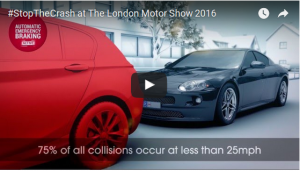 We all drink more alcohol than usual at Christmas. After all ’tis the season to be merry, so it’s almost as if it’s expected of us.
We all drink more alcohol than usual at Christmas. After all ’tis the season to be merry, so it’s almost as if it’s expected of us.
But when you’re going out as a family or group of friends, someone has to drive afterwards and she or he who takes on that job has to stay off the booze to keep us all as safe as possible.
Because the facts are that
+ 35,000 drink drive offences were recorded in the first nine months of 2015 – that’s excluding Christmas of course.
+ Having alcohol in your system, even when it’s below the limit, increases your chances of dying in a crash six fold.
+ The total number of drink drive related accidents of all severities totalled 5,620 in 2014. Plus the drivers, passengers, pedestrians, families and friends that are affected by these.
Make a fuss of your volunteer driver
But how many of us think to make a fuss of the one who volunteers to stay completely sober all night? Especially ones who like a tipple as much as the rest of their family and friends.
If your family is like mine, when alcohol or the pub is involved, it’s a given that I’ll drive and be expected to be happy with an occasional J20 whilst they get more ‘cheerful’ than me, topping up with beer.
So let’s raise a glass to our unsung driving heroes, female and male, ie the designated driver on the night.
Maybe someone could come up with a better name than ‘designated driver’ for starters…
Reward her with afternoon tea?
One business that is doing their bit to recognise and celebrate designated drivers is IAM RoadSmart. They’re offering afternoon tea at The Savoy in London as a competition prize. To enter just tweet a picture to the @IAMRoadSmart Twitter page using the hashtag #herooftheroad showing your volunteer driver being celebrated by their family or group of friends.
Former F1 World Champion Nigel Mansell CBE, IAM Roadsmart’s President, equates this support to his career success which he’d never have achieved without the backing of his team.
Similarly, he feels, a group of friends need to work together as a team to make sure the designated driver feels a part of the evening. So there is no temptation for her or him to down a swift pint/glass of wine and then risk the lives of everyone in the vehicle.
So we’d like to echo Nigel’s advice to make sure these (designated driver) heroes of the road are rewarded by either treating them to a meal or their soft drinks during the evening.
As we see it, the least you can do is say thank you after the evening so they feel appreciated. Then maybe those drivers who think that a pint or so doesn’t impair their driving ability might reconsider this, when driving, because you’ve made them realise that this matters to YOU, with safety in mind.
The alternative is to organise a taxi in advance of course.
Let’s make this festive season one to remember for all the right reasons in 2016.

 We asked
We asked  A new survey conducted by Exchange and Mart reveals that nearly 1 in 4 motorists admit to driving when distracted which is a known factor in too many road accidents.
A new survey conducted by Exchange and Mart reveals that nearly 1 in 4 motorists admit to driving when distracted which is a known factor in too many road accidents. Four in ten new young drivers admit they are unsafe on the road and two thirds of parents agree with them
Four in ten new young drivers admit they are unsafe on the road and two thirds of parents agree with them  Proposals from the Department for Transport are intended to improve the number of learner drivers passing their driving test by making sure they’re properly prepared for this, including motorway driving experience as a new component, providing this is with an approved instructor.
Proposals from the Department for Transport are intended to improve the number of learner drivers passing their driving test by making sure they’re properly prepared for this, including motorway driving experience as a new component, providing this is with an approved instructor.